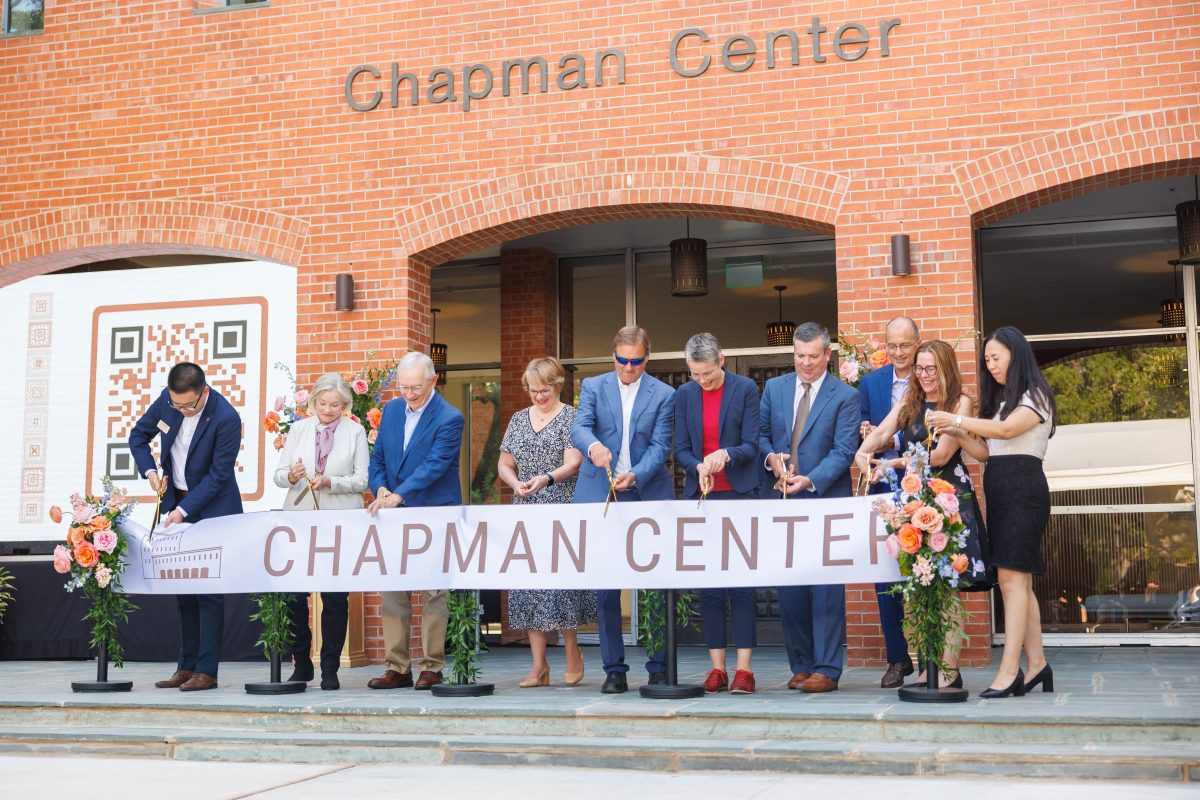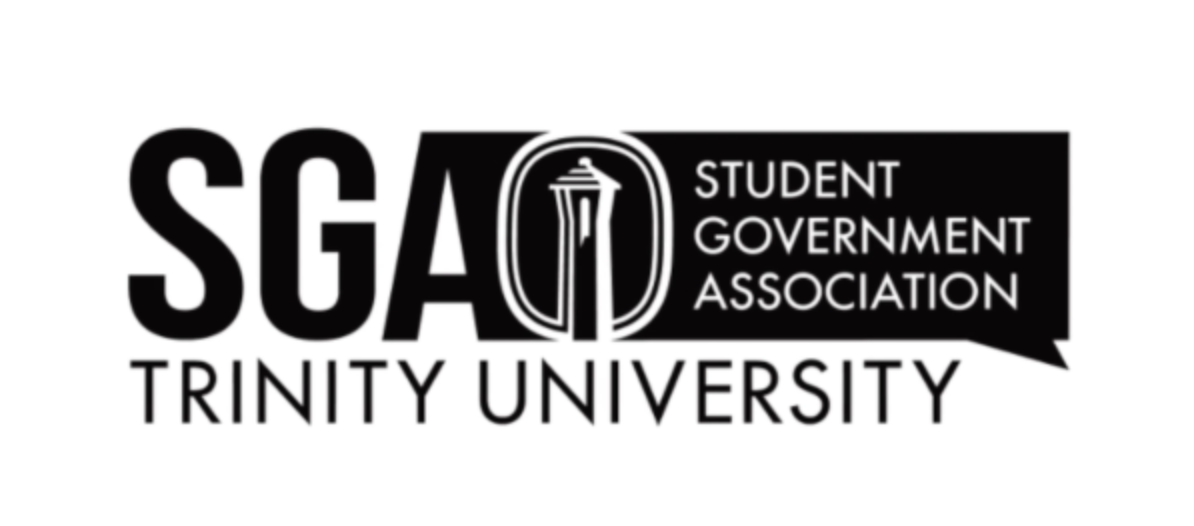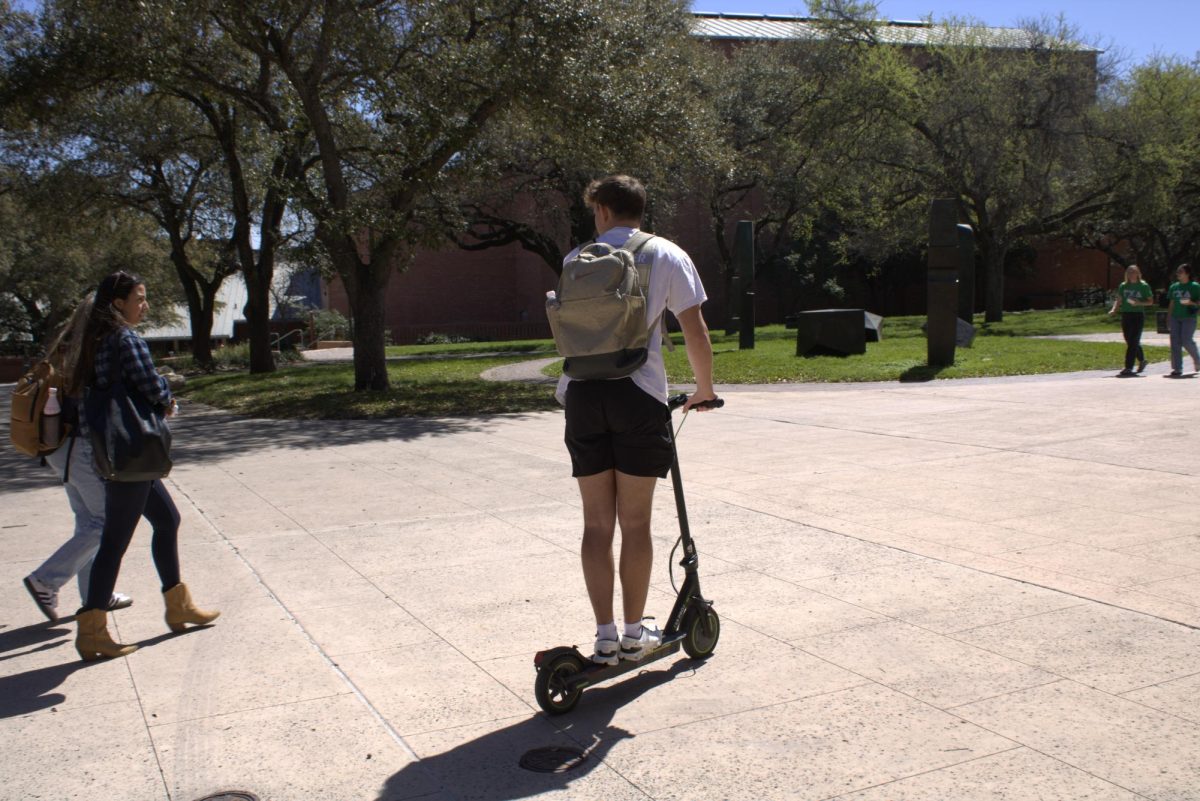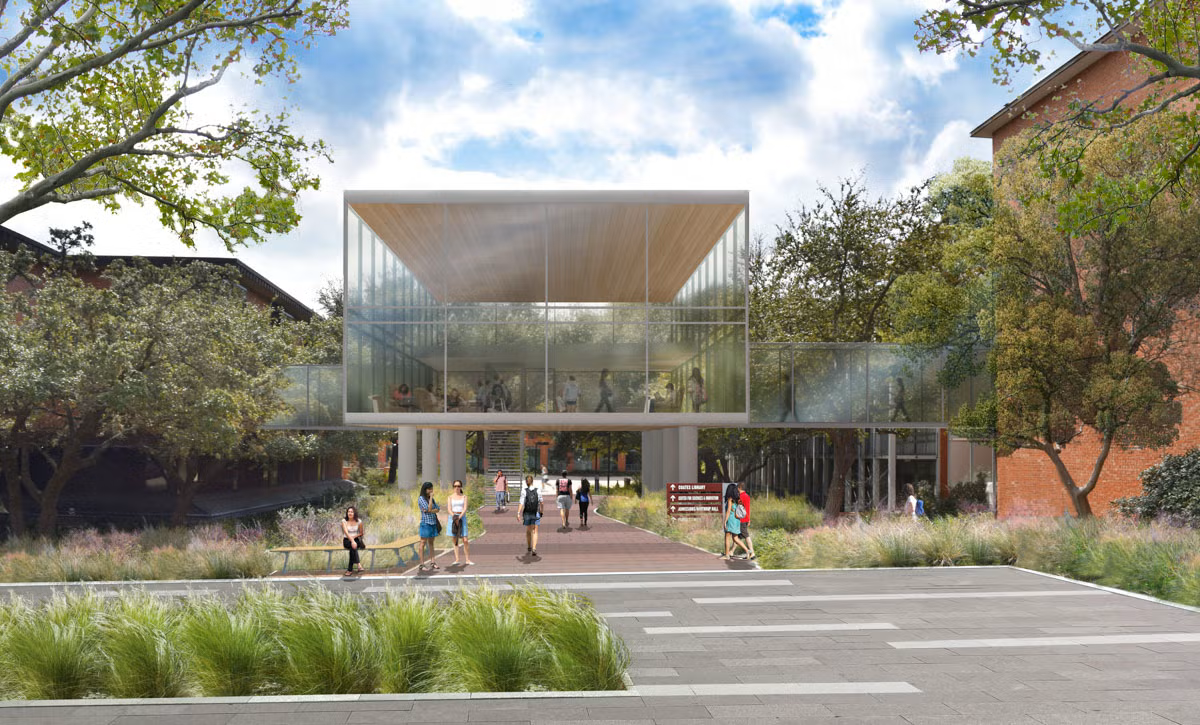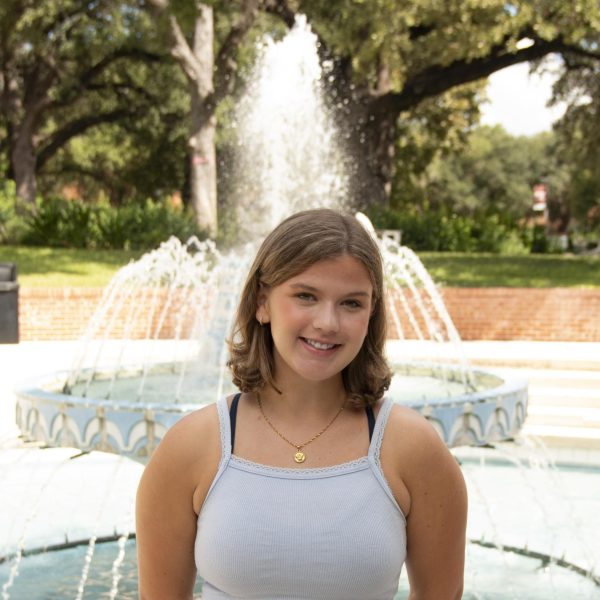From dark and mysterious halls, to now one of Trinity’s most modern and historically significant buildings, the Chapman Center turned the page to its next chapter: inviting students into its new, welcoming home.
The two shepherds in designing Chapman, Julie Persellin, accounting professor, and Ed Schumacher, chair for healthcare administration, worked together in designing the 15-month-long, $33-million renovation, alongside others like Rob Patrick, construction project manager, and James Baker, director of facilities services.
The project began spring of 2022 and was completed for this new academic year. The university held the rededication ceremony Aug. 25 to celebrate the new interior and to thank those involved, especially the Chapman Family who over the decades have given Trinity about 524 million dollars in donations.
Danny Nguyen, senior marketing and communication major and student body president, attended the ceremony to commemorate the renovation.
“It is a testament for Trinity’s excellence, not only for our business and social science education, but also our strong alumni and donor base,” Nguyen said.
The goal of the new and improved Chapman building is to connect faculty and students across all business, economic and healthcare administration interests as a way to build communication and provide resource accessibility.
“It is a true academic home for students and faculty that creates a sense of belonging and an excitement for learning to all who pass through its doors,” Persellin said in her speech on Friday.
The Chapman Center is part of Trinity’s National Historic District because of the architectural work of the famed O’Neil Ford. Originally constructed in 1964 for $1.5 million, Ford incorporated the beauty of nature within its walls. For example, in the center of the building, a large tree is surrounded by glass paneling to display the art of nature.
While constructing the new interior of the building, designers had to keep in mind strict regulations to not disrupt the authenticity of his art.
Jacob Tingle, business administration professor, has been on campus since 1991 and saw the dramatic change of Chapman from being a Trinity student himself to now a professor in the new Chapman Center.
“To not be able to change the physical shell of a place, but to turn it into something that once you walk through the doors is unrecognizable, is pretty remarkable,” Tingle said. “The classroom that I’m in sits at eye level with the atrium. Walking into that classroom is calming, welcoming and conducive to learning.”
The inspiration for the new design of Chapman was to refresh the atmosphere of the building. Elena Ramirez, senior English and communication double-major, remembers the feeling of walking through the halls of the old Chapman Center.
Dark walls were replaced with floor-to-ceiling windows and classrooms were transformed into innovative labs to facilitate data analytics and behavioral sciences. Inspired by the breakout rooms in the Center for the Sciences & Innovation, Chapman incorporated modern work spaces in which students could work together.
“I feel like what this building has really done for us is allow us to interact in a more organic way than what we used to be able to,” Persellin said. “The environment shapes the learning experience.”
Previously, Chapman had an assortment of classes, from religion to data analysis, but now, there is more of a focus for students to build connections within their specific majors.
“There is pride that comes with: ‘Oh, this is the building for students like me.’ ‘This is the place I can go to talk to fellow business majors,’” Ramirez said.
The new community Chapman established is a testament to the value Trinity holds for the liberal arts education. By renovating buildings for all majors, not just focusing on STEM majors like many larger universities, Trinity establishes respect for every discipline.
“We believe the newly renovated Chapman truly honors the interdisciplinary mission of the university,” Persellin said. “We also understood the importance of creating an innovative center of learning, while maintaining the historical elements that make Chapman such an iconic building.”
Despite the changes in Chapman over the years, the core of its building will remain the same, with a rich history written between the crevices of the wood displayed throughout Chapman’s oaky halls, preserving the memories and connections Chapman has given to students at Trinity.
“The Chapman Center is a storybook that we have all come to know and love … We leave a chapter open for our students today to craft their own adventure,” President Vanessa Beasley said in her speech last Friday. “It is our students who are the ones who will help the Chapman Center write its next chapter. They are the future of our great university.”

